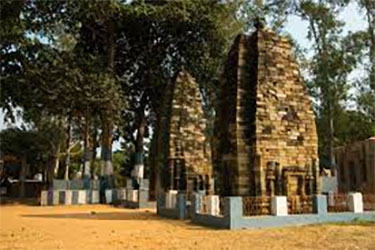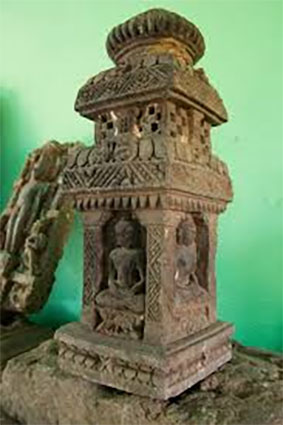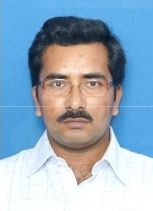The religious and ethnic identity of the Saraks:
There is a community, that may be found in several regions of India, including West Bengal and the neighbouring regions of Jharkhand. This community is known as ‘Sarak’ community which is a religious and ethnic minority of this area. Their effect cannot be ignored, despite the fact that they do not constitute a very large population.
Someone may have the misconception that the Saraks are a community or tradition that is unique to a certain location or area within Hinduism. Because Hinduism is such a complex religion, it is divided into numerous sects, sub-sects, and communities, each of which adheres to its own set of beliefs, rituals, and traditions. It may also be possible that the term “Saraks” refers to a certain community within Hinduism that is not well known or acknowledged by the majority of people. Their biases are more consistent with those held by Hindu religions due to the fact that they also worship Hindu deities. They belong to the Jativarna caste system that is practiced in Hinduism. They coexist peacefully with Hindus in their community. They are a very small minority in an area that is predominately inhabited by Hindu people; as a result, they have adopted many of the same religious customs as their neighbours. In addition to this, they are ignorant regarding the various religious affiliations that they genuinely hold.
Despite the fact that the Saraks have just been accepted into O.B.C. categories of Hinduism, the question of the religious roots of the Saraks as well as the nature of their modern religious affiliations has not been answered.
Information was gathered from knowledgeable people and leaders of the Sarak communities and other groups to determine the extent to which Jainism currently affects the Saraks’ way of life and culture. Although they would take part in the worship of other Hindu Gods and Goddesses, they would not honour the warrior deities Kali and Viswakarma. Do these rituals fundamentally represent a rejection of the Shakti worship and the use of force? Do these characteristics identify them as Jaina as opposed to Hindus? They do celebrate Hindu festivities with great zeal and enthusiasm.
But there is one thing that cannot be ignored. That is the gotra-name of the Saraks, the specific language they used in daily life, their eating habits, chosen vocations, taboos, and prejudices, are more typical of Jainism than Hinduism or other religions. For all these various reasons, it is believed that the Saraks belong to Jaina religion. They have been followers of some aspects of Jainism, such as vegetarianism, since ancient times, however, were isolated and separated from the main body of the Jain community in western, northern, and southern India and have been Hindu Bengalis ever since.
Etymology of the word Sarak:
The Saraks are an obscure ethnic community. The word ‘Sarak’ derives from the Sanskrit word Śrāvaka, from which we get the meanings of “respect” (śraddhā), “awareness” (viveka), and “work” (kriya). So, a Śrāvaka is someone who, by chance, is a hard worker who treats others with respect. The word for a listener in Sanskrit is Śrāvaka. This term is used in Jainism. In Jainism, a śrāvaka is any lay Jain so the term śrāvaka has been used for the Jain community itself (for example see Sarak and Sarawagi). Śrāvakācāras are the lay conduct outlined within the treaties by Śvetāmbara or Digambara mendicants. “In parallel to the prescriptive texts, Jain religious teachers have written a number of stories to illustrate vows in practice and produced a rich repertoire of characters”.
A śrāvaka in Jainism is a lay Jain. He is the hearer of discourses of monastics and scholars, Jain literature. In Jainism, the Jain community is made up of four sections: monks, nuns, śrāvakas (laymen) and śrāvikās (laywomen). The term śrāvaka has also been used as a shorthand for the community itself. For example, the Sarawagi are a Jain community originating in Rajasthan, and sometimes śrāvaka is the origin of surnames for Jain families. The long-isolated Jain community in East India is known as the Sarak. The conduct of a śrāvaka is governed by texts called śrāvakācāras, the best known of which is the Ratnakaranda śrāvakācāra of Samantabhadra. A śrāvaka rises spiritually through the eleven pratimas . After the eleventh step, he becomes a monk. Jains follow six obligatory duties known as āvashyakas: sāmāyika (practising serenity), chaturvimshati (praising the tirthankara), vandan (respecting teachers and monks), pratikramana (introspection), kāyotsarga (stillness), and pratyākhyana (renunciation).




Hello my loved one I want to say that this post is amazing great written and include almost all significant infos I would like to look extra posts like this
I’m grateful. I have been looking for information on this subject for a time, and this is the best resource I have discovered thus far. What about the bottom line, though? Do you know for sure what the supply is?
I do believe all the ideas youve presented for your post They are really convincing and will certainly work Nonetheless the posts are too short for novices May just you please lengthen them a little from subsequent time Thanks for the post
Thanks, I have recently been looking for info about this subject for a while and yours is the greatest I have discovered so far. However, what in regards to the bottom line? Are you certain in regards to the supply?
helloI like your writing very so much proportion we keep up a correspondence extra approximately your post on AOL I need an expert in this space to unravel my problem May be that is you Taking a look forward to see you
This webpage is unbelievable. The brilliant data reveals the essayist’s interest. I’m awestruck and expect further such astounding posts.
you are truly a just right webmaster The site loading speed is incredible It kind of feels that youre doing any distinctive trick In addition The contents are masterwork you have done a great activity in this matter
I appreciate you sharing this blog post. Thanks Again. Cool.
Somebody essentially help to make significantly articles Id state This is the first time I frequented your web page and up to now I surprised with the research you made to make this actual post incredible Fantastic job
I do trust all the ideas youve presented in your post They are really convincing and will definitely work Nonetheless the posts are too short for newbies May just you please lengthen them a bit from next time Thank you for the post
Optimize Your Farm’s Water Management with Bwer Pipes: Bwer Pipes offers a comprehensive range of irrigation solutions designed to help Iraqi farmers maximize water efficiency. Our reliable sprinkler systems and durable pipes ensure uniform water distribution, promoting healthier crops and sustainable farming practices. Explore Bwer Pipes